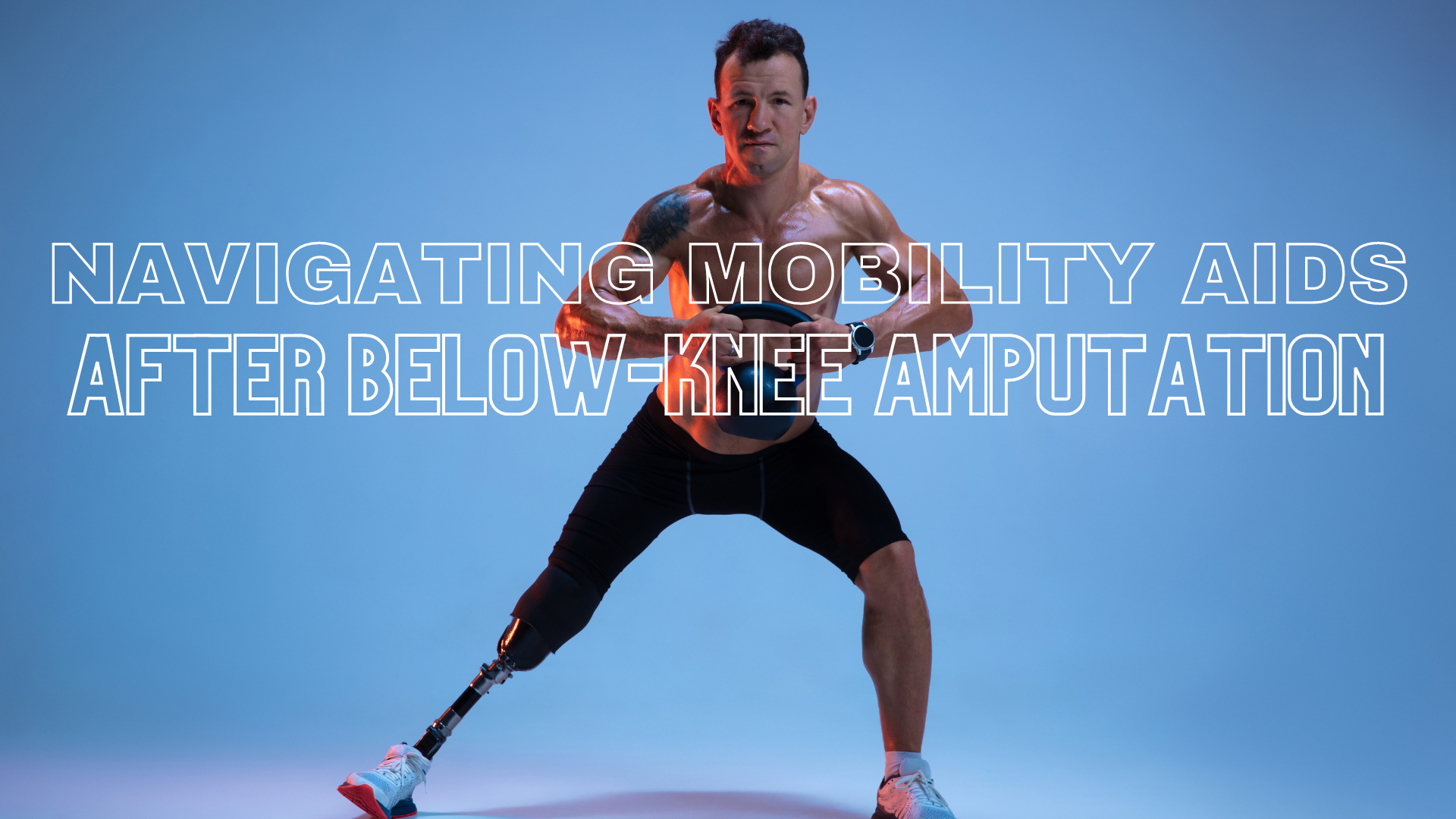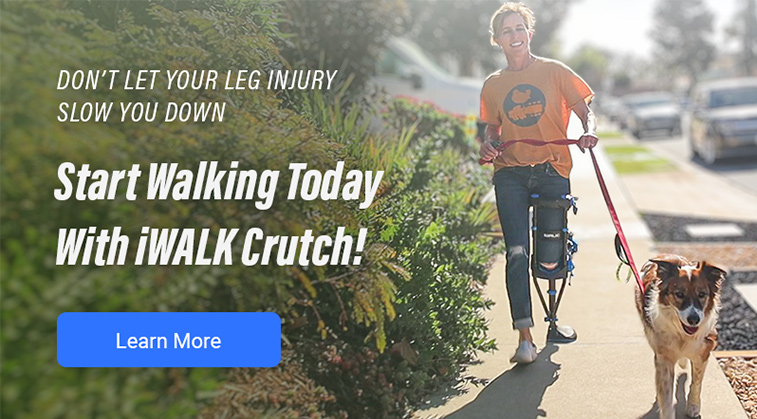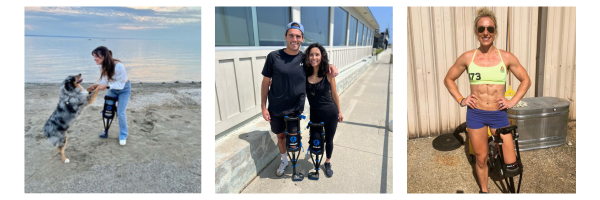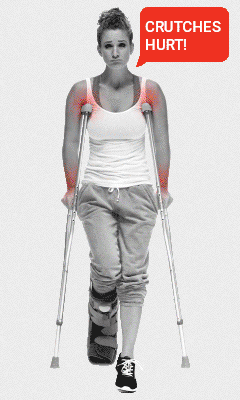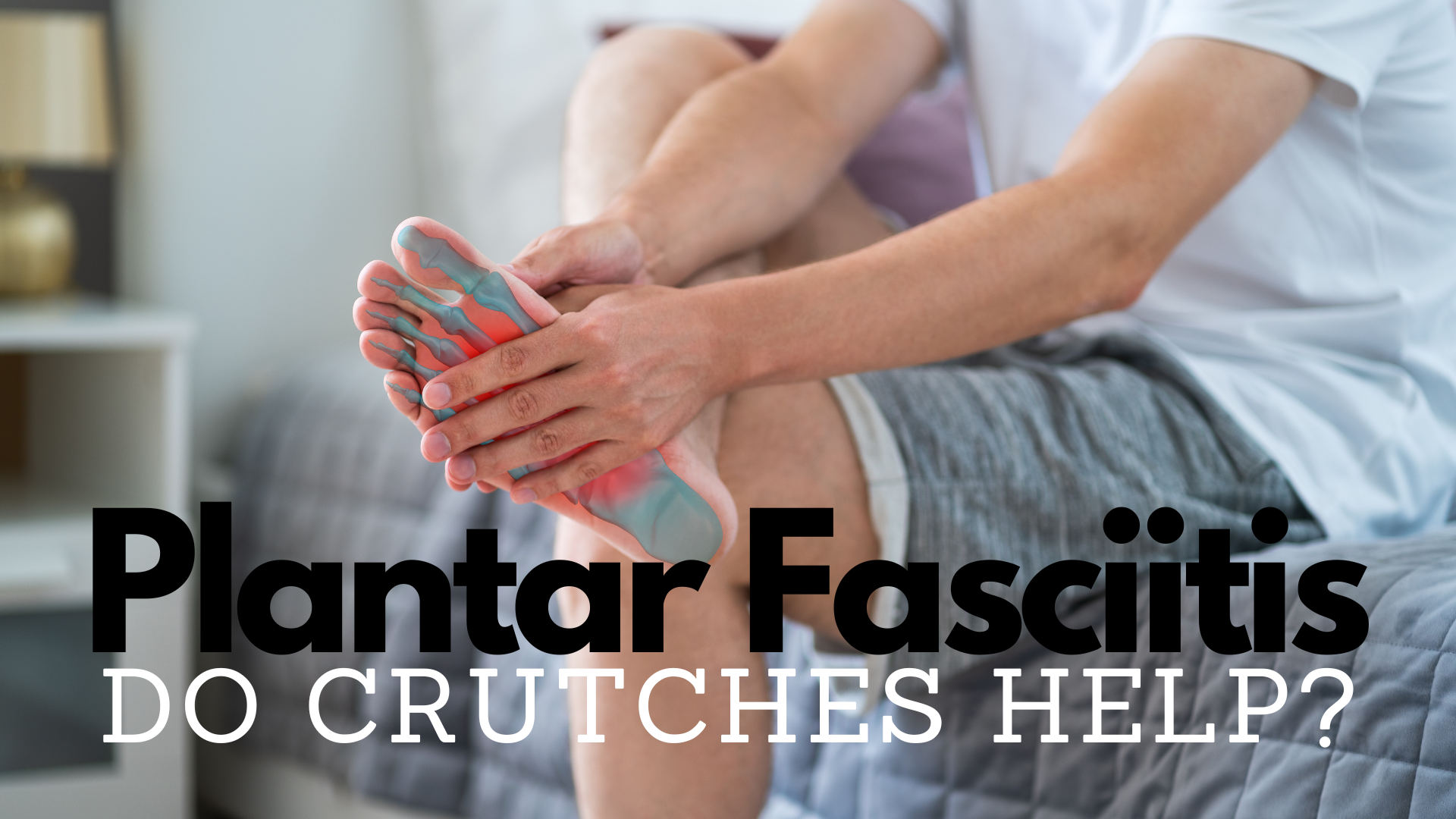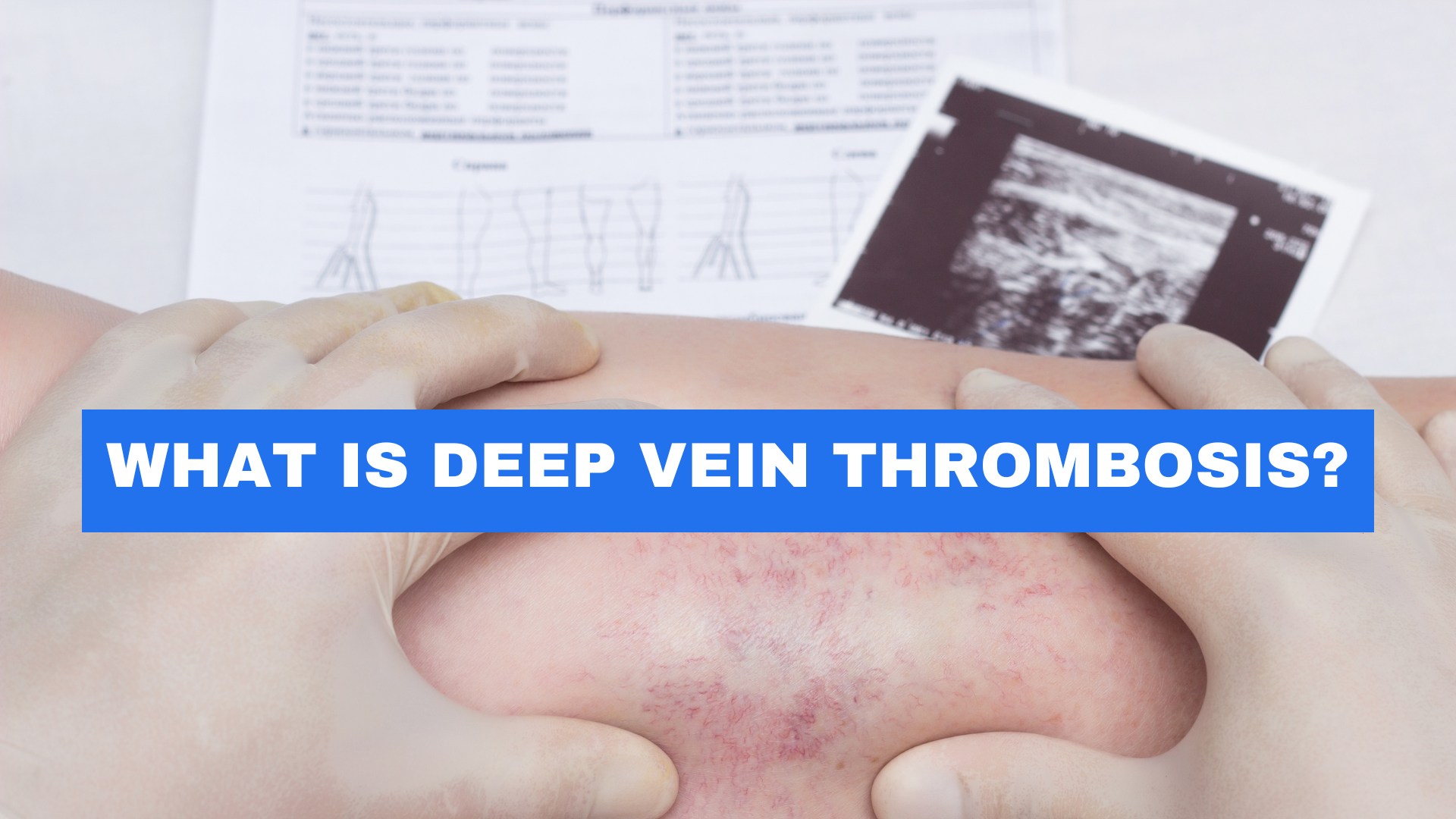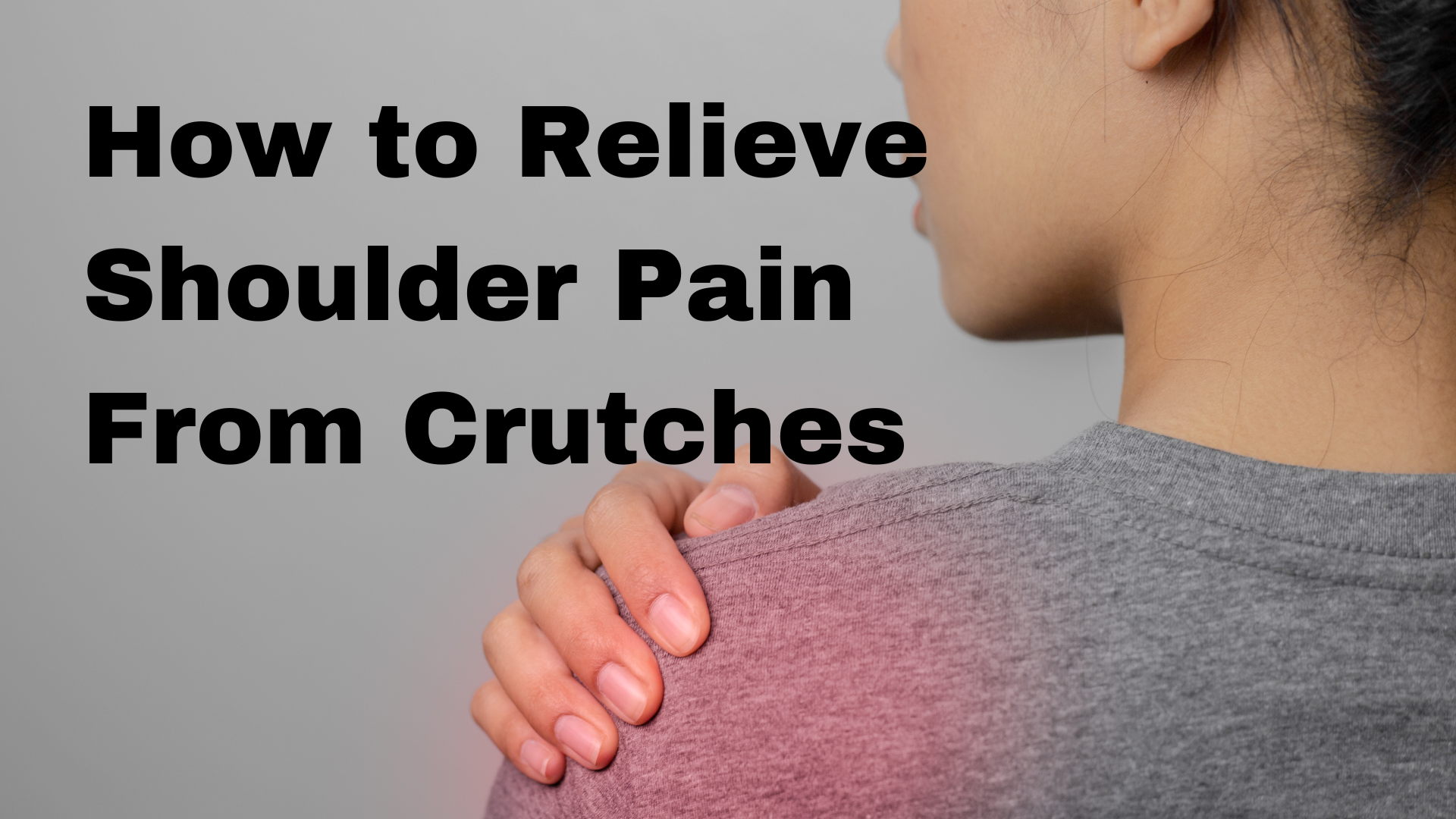After undergoing a below-knee amputation (BKA), individuals face the challenge of rebuilding their mobility and independence. Fortunately, advancements in medical technology offer a range of options to assist in this journey. From traditional crutches to innovative hands-free solutions like the iWALK crutch, the path to mobility after BKA is diverse and adaptable.
Transitioning Through Mobility Aids
In the immediate aftermath of a BKA, the process of recovery begins. Different mobility aids may be utilized at various stages of rehabilitation, depending on individual circumstances.
- Traditional Crutches:
Following a BKA, traditional crutches are often used initially to provide stability and support. These aids help distribute weight away from the residual limb, easing strain and facilitating mobility. Physical therapists play a crucial role in teaching proper crutch usage and ensuring safe movement.
- Knee Scooters:
For those with BKA, knee scooters offer an alternative to crutches, providing a more comfortable and efficient means of getting around. By supporting the injured leg on a padded platform, knee scooters allow individuals to propel themselves using their unaffected leg, reducing strain on the residual limb.
- Wheel Chair:
Wheelchairs provide seated mobility and resting options, offering comfort and stability for individuals navigating longer distances after below-knee amputation. They enhance accessibility and independence, allowing users to conserve energy and navigate challenging environments with ease. While offering an alternative mode of mobility, wheelchairs may not be suitable for individuals who desire to maintain an upright posture or engage in standing activities. They can also be challenging to navigate in tight spaces and may require assistance for transfers.
- Prosthetics:
As healing progresses and strength improves, many individuals opt for prosthetic limbs to enhance mobility and functionality. Prosthetics are tailored to fit the individual’s residual limb and can significantly improve quality of life by enabling a more natural gait and greater independence in daily activities. Although enhancing mobility, prosthetics may present difficulties on stairs and uneven ground, and they are not designed for shower use. They also can cause pressure sores or other irritation, which can require the amputee to temporarily stop usage of the prosthetic.
Traditional mobility aids such as crutches, knee scooters, wheelchairs, and prosthetics play crucial roles in aiding individuals with a BKA. However, they come with inherent limitations that can impede mobility and daily activities. Crutches, for instance, present challenges on stairs due to their reliance on both hands for operation, making negotiating steps cumbersome and often requiring assistance. Similarly, knee scooters, while offering improved mobility on flat surfaces, struggle with uneven terrain and are incompatible with shower use. Prosthetics, although enhancing mobility, still pose difficulties on stairs and uneven ground, and are not designed for wet environments like showers. They also can cause pressure sores or other irritations which can require the amputee to temporarily discontinue prosthetic use. Despite these shortcomings, advancements in mobility aid technology offer promising solutions to address these challenges and improve the quality of life for individuals recovering from below-knee amputation.
The iWALK crutch is a revolutionary mobility aid designed to mimic the natural motion of walking while providing support and stability. Its ergonomic design redistributes weight from the injured limb to the upper thigh, enabling users to walk with a more natural gait and navigate various terrains with ease.
In addition to meeting the standard criteria for eligibility to use the iWALK Crutch, individuals with below-knee amputation must have a minimum residual limb length of 4 inches (10cm) and be capable of bearing weight on the shin. While there may be other potential considerations, based on our experience, the majority of below-knee amputees adjust comfortably to using the iWALK Crutch.
Benefits of the iWALK Crutch:
- The hands-free design promotes greater independence and mobility.
- Allows users to easily navigate stairs, uneven terrain, and tight spaces.
- It enhances comfort and reduces strain on the upper body compared to traditional crutches.
- Facilitates a faster transition to normal daily activities and improved quality of life during rehabilitation.
- Provides another option for individuals seeking a break from prosthetics
Rebuilding mobility after below-knee amputation is a challenging but achievable process, aided by innovative solutions like the iWALK hands-free crutch. By transitioning through various mobility aids based on individual needs and progress, individuals can regain independence and reclaim their lives post-amputation. With the right support and rehabilitation, the path to mobility is within reach for all below-knee amputees.

